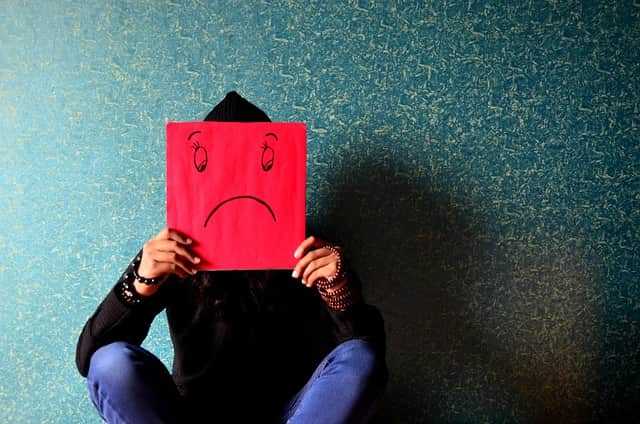In recent years, discussions around mental health have gained significant prominence, shedding light on the importance of addressing conditions such as depression. While this increased awareness is undoubtedly positive, there has been a growing concern about the potential trivialization or romanticization of mental health issues, with some questioning whether depression is becoming a fashionable trend rather than a genuine struggle. This article aims to explore the concept of depression as a fashion and unravel the complexities surrounding this controversial topic. By examining societal factors, media influence, and individual motivations, we can better understand the implications and nuances associated with this trend.
Table of contents
Introduction
Depression is a debilitating mental health condition characterized by persistent sadness, loss of interest, and a range of emotional and physical symptoms. It affects millions of people worldwide, leading to significant personal suffering and societal burden (Eaton et al., 2008). However, in recent years, there has been an observable shift in the perception and portrayal of depression. It has entered popular culture and has become intertwined with the notions of style, trendiness, and aesthetics. This phenomenon has sparked discussions about whether depression is being sensationalized, romanticized, or even trivialized, ultimately leading to concerns about the authenticity and seriousness of the condition.
The rise in mental health awareness has undeniably been a positive development, breaking down stigmas and encouraging open conversations. However, this increased attention has also brought about unintended consequences. The lines between genuine mental health struggles and performative displays have become blurred, raising questions about the motivations behind the expression of depression and the potential for it to become a fashion statement.
Depression as a Fashion: A Closer Look
Social Media and the “Sad Aesthetic”
In the age of social media, platforms like Instagram, Tumblr, and TikTok have become spaces where individuals curate their online identities and present carefully constructed narratives. The emergence of the “sad aesthetic” glorifies melancholy, portraying depression as a trendy and desirable state. This aesthetic often features moody photographs, quotes, and themes of isolation, projecting an idealized image of depression.
Celebrity Influence and Mental Health Advocacy
The openness of celebrities and public figures about their struggles with mental health has played a significant role in shaping societal perceptions. While their advocacy efforts have helped reduce stigma and encourage dialogue, there is a risk of inadvertently glamorizing mental health issues, leading to their inclusion in the broader realm of celebrity culture and trends.
Glamorization of Suffering in Pop Culture
Popular culture, including music, fashion, and art, often romanticizes suffering and portrays it as a source of creativity. This portrayal, while intended to be expressive and thought-provoking, can inadvertently normalize depression, making it an integral part of artistic expression and appealing to individuals seeking a sense of identity and belonging.

Societal Factors Contributing to the Trend
The Desire for Attention and Validation
In an increasingly connected world, individuals may seek attention and validation through the display of depression. Attention-seeking behavior, rooted in a need for recognition and support, can lead to the adoption of depression as a fashion statement or a means of garnering sympathy and social connections.
Peer Pressure and Conformity
Social dynamics, particularly among young people, can contribute to the propagation of trends, including the manifestation of depression as a fashion statement. Peer pressure, the desire to fit in, and the fear of missing out can influence individuals to adopt certain behaviors and beliefs, including aligning themselves with the fashionable portrayal of depression.
The Influence of Consumer Culture
Consumer culture and advertising play a significant role in shaping societal values and desires. The commercialization of mental health, including the sale of products marketed as remedies or coping mechanisms for depression, can inadvertently contribute to the perception of depression as a fashionable trend. This commodification can blur the line between genuine struggles and superficial trends.
The Role of Media in Shaping Perceptions
Portrayal of Mental Health in Film and Television
Film and television have the power to shape public perceptions and influence cultural norms. While some productions strive to accurately depict mental health issues, others may exploit them for dramatic effect or perpetuate harmful stereotypes. Irresponsible portrayals can contribute to the trivialization of depression and its integration into mainstream narratives.
Journalism and the Spectacle of Suffering
Media outlets often focus on sensational stories that attract attention and generate higher viewership or readership. This can lead to the sensationalization of mental health struggles, including depression, and the creation of a spectacle around suffering. Such sensationalism can inadvertently contribute to the perception of depression as a fashionable trend.
The Impact of Clickbait and Sensationalism
Online media platforms, driven by clickbait and sensational headlines, can amplify the trivialization of depression. By capitalizing on provocative narratives and sensationalized stories, these platforms can distort public understanding and perpetuate the notion of depression as a fashionable trend, undermining the severity of the condition.
Individual Motivations and Personal Expression
Seeking Identity and Belonging
Depression, when viewed as a fashion trend, may provide individuals with a sense of identity and belonging. By aligning themselves with a perceived community of like-minded individuals, they seek connection and validation. This desire for belonging, combined with the visibility and allure of depression in popular culture, can influence individuals to adopt this trend.
The Power of Self-Diagnosis
The internet has empowered individuals to research and self-diagnose various conditions, including depression. While self-diagnosis can be empowering for some, it can also lead to misinterpretation and the adoption of depression as a fashion statement without proper professional assessment and support.
The Pursuit of Authenticity and Vulnerability
The cultural shift towards valuing authenticity and vulnerability has made the expression of struggles and emotions more acceptable. However, this trend can inadvertently lead to performative displays of depression, as individuals attempt to conform to societal expectations of authenticity, often blurring the lines between genuine experiences and fashion-oriented expressions.
The Dangers and Pitfalls of Trivialization
Diminishing the Severity of Mental Health Issues
Trivializing depression can undermine the gravity of the condition, leading to a lack of understanding and empathy. It may perpetuate the misconception that depression is merely a passing trend rather than a serious mental health concern that requires appropriate support and treatment.
Impeding Access to Proper Diagnosis and Treatment
When depression is trivialized or romanticized, individuals may hesitate to seek professional help or may misinterpret their own experiences. Delayed or improper diagnosis can result in inadequate treatment and exacerbate the negative consequences of depression.
Distorted Perceptions of Mental Health
The trivialization of depression can contribute to a distorted understanding of mental health issues among the general population. This can perpetuate misconceptions, hinder progress in public education, and impede efforts to eradicate stigmas surrounding mental health.
The Importance of Responsible Discourse and Education
Promoting Genuine Understanding
Engaging in open and honest conversations about mental health is crucial in addressing the trivialization of depression. By promoting genuine understanding, we can encourage empathy, reduce stigma, and ensure that mental health discussions remain focused on the experiences of those genuinely affected.
Encouraging Compassion and Empathy
Compassion and empathy are essential when discussing mental health trends. By fostering a supportive environment, we can encourage individuals to share their experiences authentically, while also being mindful of the potential impact of their expressions on those genuinely struggling with depression.
Supporting Professional Help and Resources
Encouraging individuals to seek professional help and access reliable mental health resources is crucial. By emphasizing the importance of proper diagnosis, treatment, and support, we can redirect the focus towards addressing the genuine struggles of those affected by depression.
Conclusion
The perception of depression as a fashion trend is a multifaceted issue influenced by societal factors, media portrayals, and individual motivations. While it is essential to acknowledge the potential for trivialization and romanticization, it is equally crucial to approach the topic with nuance and understanding. By fostering responsible discourse, promoting genuine education, and supporting professional help, we can ensure that mental health discussions maintain their authenticity and prioritize the well-being of those genuinely affected by depression.
Sources
- American Psychiatric Association. (2013). Diagnostic and statistical manual of mental disorders (5th ed.). Arlington, VA: American Psychiatric Publishing.
- Eaton, W. W., Martins, S. S., Nestadt, G., Bienvenu, O. J., Clarke, D., & Alexandre, P. (2008). The burden of mental disorders. Epidemiologic Reviews, 30(1), 1-14.
- Hales, R. E., Yudofsky, S. C., & Gabbard, G. O. (Eds.). (2008). The American Psychiatric Publishing textbook of psychiatry (5th ed.). Arlington, VA: American Psychiatric Publishing.
- Hyman, S. E. (2010). The diagnosis of mental disorders: The problem of reification. Annual Review of Clinical Psychology, 6, 155-179.
- Twenge, J. M., Cooper, A. B., Joiner, T. E., Duffy, M. E., & Binau, S. G. (2019). Age, period, and cohort trends in mood disorder indicators and suicide-related outcomes in a nationally representative dataset, 2005-2017. Journal of Abnormal Psychology, 128(3), 185-199.
- World Health Organization. (2017). Depression and other common mental disorders: Global health estimates. Retrieved from https://apps.who.int/iris/bitstream/handle/10665/254610/WHO-MSD-MER-2017.2-eng.pdf



 For all latest articles, follow on Google News
For all latest articles, follow on Google News